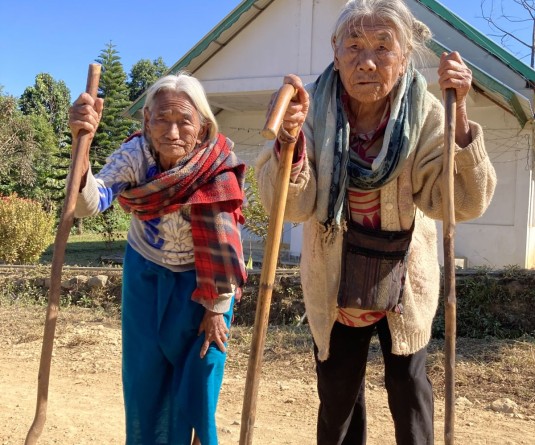
M Chuba Ao
BJP National Vice President
The north east India is a rich hub of natural resources and near idyllic climatic conditions. Over the decades, the felling of the trees for firewood has been contributing to the deforestation in the region. And this contributed towards worsening air pollution in our Nagaland state and also neighbouring states. But firewood is required. Nagas or other inhabitants also depended a lot on forest economy. I need not be any environmental scientist to make such a statement.
Moreover, our region has a few common but nearly dangerous natural hazards - the earthquake,landslides and floods. The forest cover in the eight north eastern states accounts for 23.75 per cent of the total forest cover in the country.
The unique geo-climatic conditions of the regions make the entire northeastern region of India vulnerable for these disasters. It goes without stating that Assam -- the perceived to be numero uno state in our region - experiences perennial floods, river bank erosion and landslides.
Nagaland is greatly afflicted with the threat of landslides and our own state capital region has been worst affected by the same. The nightmare has troubled people in our state and also those in Manipur.
It may be needless to add that the major cities and towns including Guwahati get submerged during floods. There is a huge waste spread over the land and river causing several health hazards.
There are other major environmental problems too. They are - Industrial activities, bricks making,coal mining operation, oil exploration, fertilizer industries, cement and automobile exhaust emissions. Old timers and middle-aged people already develop eyes-related problems during summer months in and around Guwahati.
Due to floods hundreds of wild animals including deer and rhinoceros' calves living in the Kaziranga National Park also are lost in the stream of mighty Brahmaputra. We also have the case river island 'Majuli'.
Closer home in Nagaland, in 2010, the state had 1.31Mha of natural forest, extending over 79% of its land area. In 2021, it lost 12.8kha of natural forest, equivalent to 6.92 Mt of Carbon (CO₂) emissions.
One study has revealed that between 2019 and mid-2022, Arunachal Pradesh lost the maximum forest cover of 257 Sq. km, Manipur lost 249 Sq. km, Nagaland 235 Sq. km, Mizoram 186 Sq. km, Meghalaya 73 Sq. km, Assam 15 Sq. km, Tripura 4 Sq. km and Sikkim lost one square kilometre forest cover.
Nagaland lost a total of 235 Sq. km forest cover in two years, as per the India State of Forest. Report (ISFR) 2021. Nagaland with geographical area 16,579 Sq. km has 234 Sq. km reserve forest and 8,623 Sq. km of unclassed forest, which includes all forest other than reserve forest and protected forest.
The state has 8,623 Sq. km of recorded forest areas, which is 52.01% of geographical area.
Now, rather than doing the post-mortem and finding details how much we have lost; it is high time the focus shifts to what corrective steps we ought to take.
Firstly, as a native son-of-the-soil and a Naga I would like to lay emphasis on the fact that the common people ought to be battle ready to fight the emerging challenges on this front. People should not depend solely on government schemes for protection of the environment and forest cover.
If all of us in unity of purpose and sincerity start planning and planting say about 10,000 plantations per village across the region, the face of the North East will change. Thus, encouragement must be given to growing Mango, lichi, jackfruits etc. In fact, seeds after consuming the fruits can be used in a systematic manner.
We do not need huge corporate and government investments. A small voluntary-based collection from the respective villages and government employees and others from respective villages will do and save the world from destroying it further.
Nagas are religious. In the past, as animists we have worshipped hills and trees. Even now there is much respect for nature. We have celebrations around Stone Pulling practices. Nagas belong to nature and Nature belongs to Nagas.
Mother Nature has been taking care of us for ages. It is time we payback the good and selfless gestures especially in the new century.
In the end, I must say moreover we can take up plantation of saplings that suit cold climates. Most fruit bearing trees could be taken like oranges etc.
I must also add here that by concerted efforts by all stakeholders we can ensure active involvement of village councils, panchayat bodies and NGOs based in both rural and urban pockets.
If we take such efforts, we can see real climate change within 5 to 7 years, I am confident about it.




